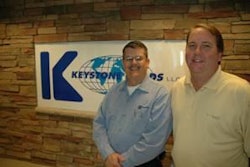While there are many accounting maneuvers to lower expenses in poultry operations, one thing remains true: yield is king. After all, when it comes right down to it, your company has spent a lot of time and cost to raise a plump, healthy bird, and you want to convert as much of that hard work and expense into sellable product out the back of the plant.
After all, no one is escaping the historically high cost of corn and energy or the expensive burdens placed on poultry businesses from excessive and invasive regulation. Managers at every poultry company are scouring their financials attempting to squeeze every last quarter of a penny per pound out of their cost. With most companies having little influence over market conditions or government meddling in their business, you have to concentrate on those things you can control.
Lagging indicators
The single greatest asset to any yield program is accurate and timely information. The problem we often see is how all this information gets converted (or doesn’t get converted) into usable data. What is needed is data that can drive decisions to increase yield in real time.
Many companies, for instance, log yard time as one measurement that will affect yield. The shorter the time on the yard, especially in the heat of the summer, the less yield loss, right? But, when does management get that information? Oftentimes, this information is written on a worksheet on a clip board somewhere and it (sometimes) gets entered into a spreadsheet for management to review the next day. That is too late to do anything about it. And, even when management gets the information, it is in the form of an “average yard time.” This type of information is known as “lagging indicators.” In other words, it’s “history.”
Leading indicators
A better system might be to have trailers logged into a database when they enter the yard. For example, trailer “XYZ” might get logged into a database when it is weighed at the scale house. From the moment the trailer gets logged in, the clock starts ticking. If the goal for yard time is four hours or less, a database can be polled every 10 minutes or so, and as trailer “XYZ” nears the four-hour mark, the alerts could be sent to the hanging room supervisor via text messages or emails. It then gets logged into the system again as it is brought to the back dock, stopping the clock. If trailer “XYZ” hits the four-hour mark and is still in the cooling shed an alert can be sent to the first-processing manager. This would allow the manager to follow up with the hanging room supervisor to see why the trailer hasn’t been unloaded.
This kind of information is known as “leading indicators” where the data is available in such a way that affects the outcome of the shift or the daily results. The more you can provide supervisors and managers with leading indicators the more valuable the information becomes. And yield is all about information.
Best practices based on data
That is not to say data that can only be used for lagging indicators should not be bothered with. In fact, there are times when collecting information for analysis later is exactly what is necessary.
Every chiller operator, for example, has “their way” of increasing moisture pick up through the chiller. In almost every case, “their way” is based on how they were shown to set up the chillers when they were trained by the outgoing chiller operator, with some minor tweaking over time.
However, what if there was a way to measure as many of the operating and bird-related variables as possible in order to analyze the data and create best practices based on data? By capturing all the variables for bird-related indicators, PH and chlorine levels analysis can be performed, providing the data-driven best practices.
Bird-related variables that impact yield include the following:
• weight
• breed
• lot number
• grower identification
Process-related variables that impact yield include the following:
• water temperature at pre-chill and in the middle and at the end of the chiller
• agitation and blower settings
Real-time adjustments
Over time, this same data can provide you with more leading indicator types of information by allowing the operator to adjust the chiller settings based on the historical best-practice settings for a given bird type. In other words, as the bird weight (or other chosen variable) changes throughout the day or week, the chiller settings can be adjusted to maximize the available yield based on predetermined best practice.
There are ways to send alerts based on things like chiller temperature settings. So, if, for example, the pre-chill temperature drops below a set temperature, the chiller operator (or whomever you designate) is notified via text or email to ensure the issue is addressed in a timely manner.
Just a few years ago, the technology required to transform from a lagging indicator environment to a leading indicator environment would have been too cost prohibitive. But, unlike many of the costs of doing business, the cost of technology continues to drop. So why not exploit the one cost of doing business that has actually become cheaper – technology? It can increase the one thing that has become so important to your bottom line – yield.

















